Collaboration Meeting Follow-Up [07.18.2018] -- EtTrg = (9, 15) Response vs. EtTrg = (9, 20) Response
During my presentation in the JetCorr parallel session of the 2018 Collaboration Meeting at Lehigh University, a listener inquired about how different the response matrices are between using 'eTtrg = (9, 15)' GeV and using 'eTtrg = (9, 20)' GeV, For reference, I showed the R = 0.3 response matrix using 'eTtrg = (9, 20)' GeV (slide 6 in the link below) and I showed the R = 0.2 and R = 0.5 response matrices using 'eTtrg (9, 15)' GeV (slide 8 in the link below).
https://drupal.star.bnl.gov/STAR/blog/dmawxc/collaboration-meeting-slides-july-18th-2018
To look into this, I directly compared the response matrices between the two trigger ranges for all three R (0.2, 0.3, and 0.5).



All response matrices have been normalized in the usual manner before taking their ratios. And here are comparisons of their profiles:
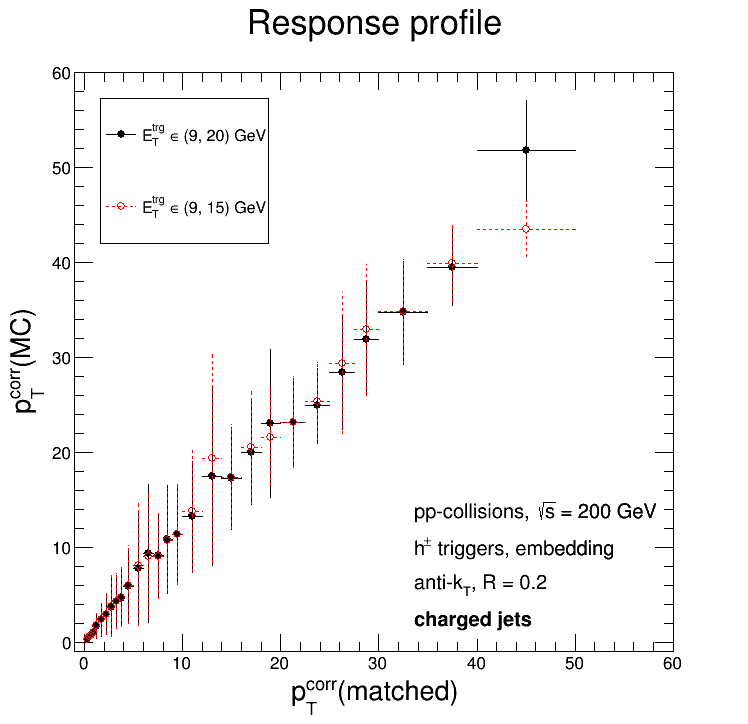

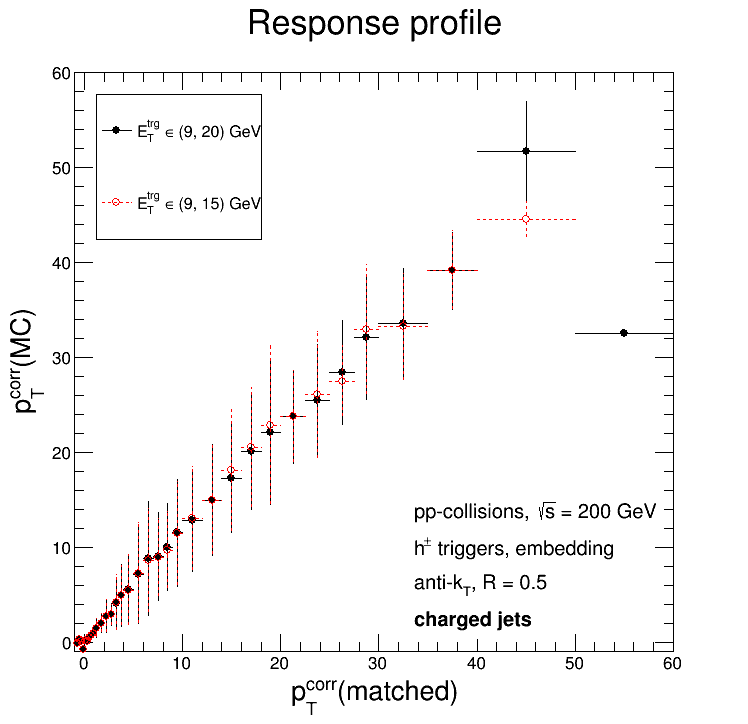
And lastly, for each value of R I unfolded the relevant (pi0-triggered) 'eTtrg = (9, 15) GeV' charged recoil jet spectrum using both response matrices. Below I show the measured spectrum compared against the backfolded distribution. For each pair, the 1st plot is using the 'eTtrg = (9, 15)' GeV matrix, and the 2nd plot is using the 'eTtrg = (9, 20)' GeV matrix.
R = 0.2:
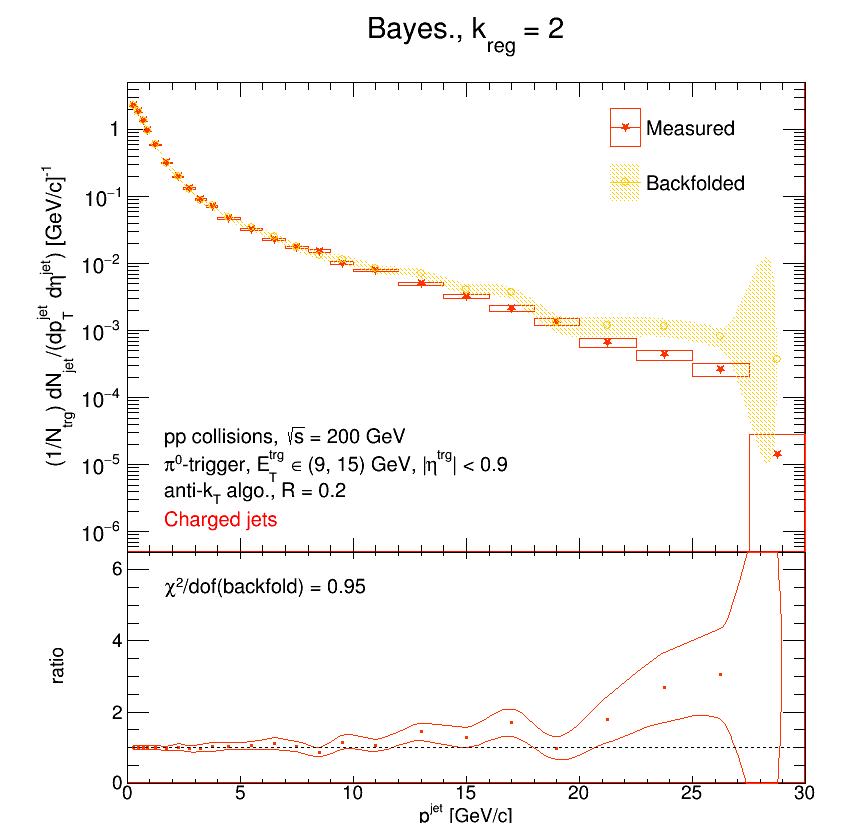
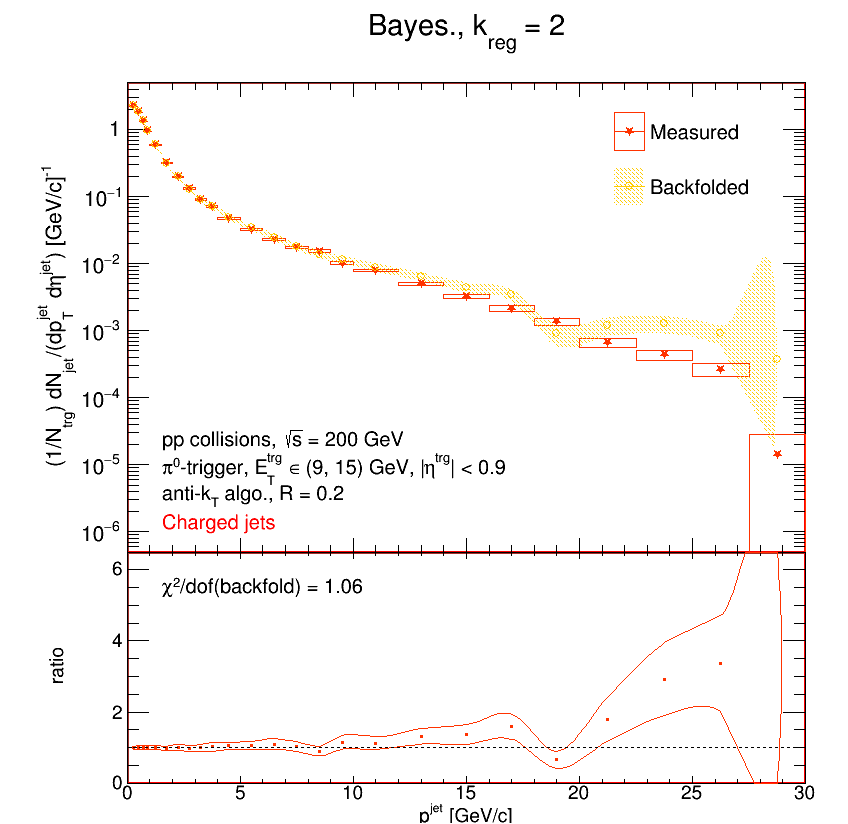
R = 0.3:

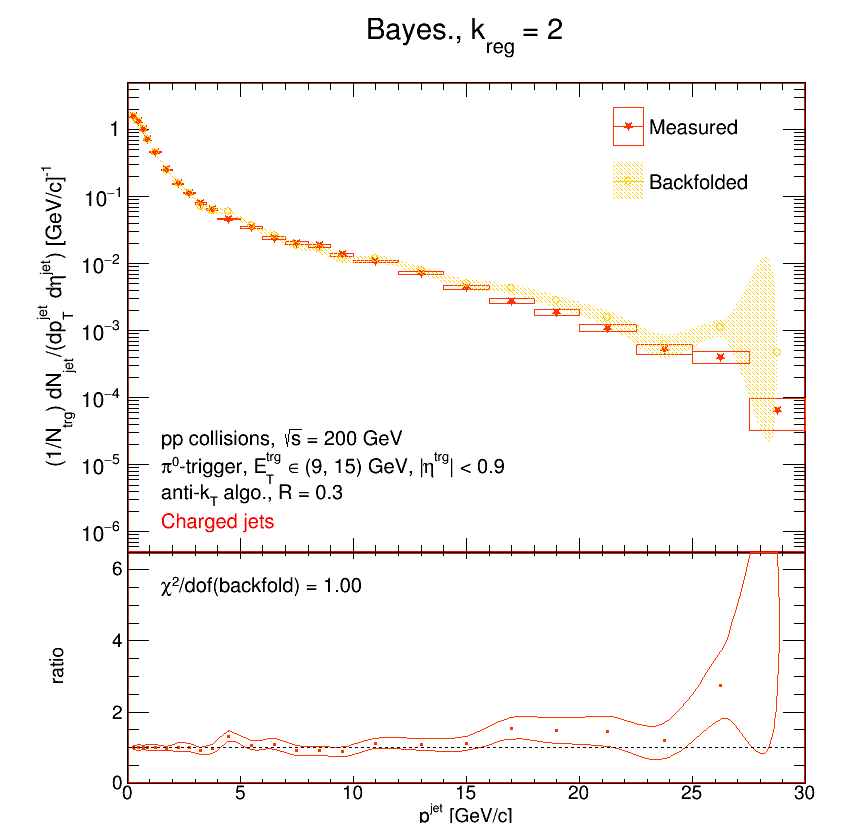
R = 0.5:
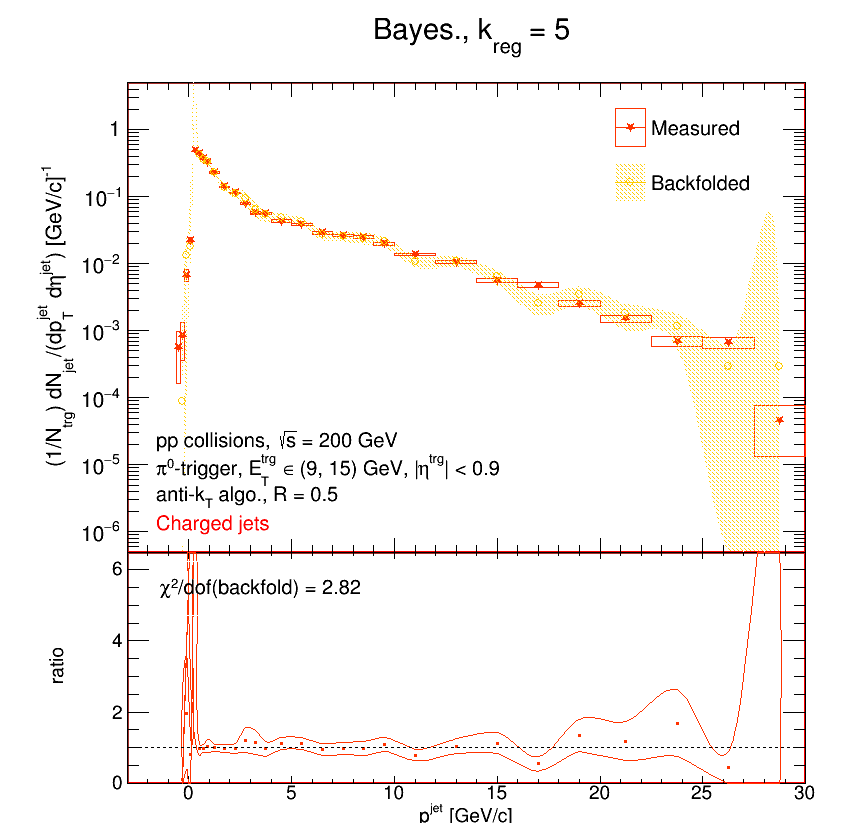
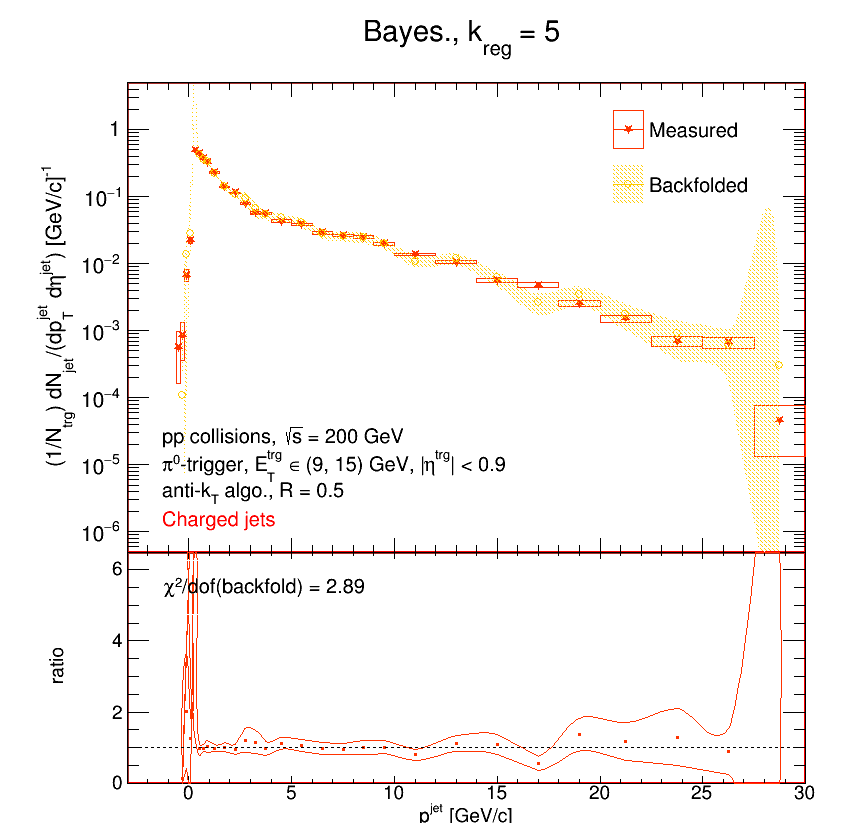
In all 3 cases, the differences between the 2 backfolded distributions seem to be minor if not negligible (the chi2 value is comparable in all 3 cases). So the takeaway from this study is that using either matrix is fine. In light of this, when it comes time to unfold each bin of 'eTtrg' separately I think I'll use the full 'eTtrg = (9, 20)' GeV matrix for all bins.
- dmawxc's blog
- Login or register to post comments
